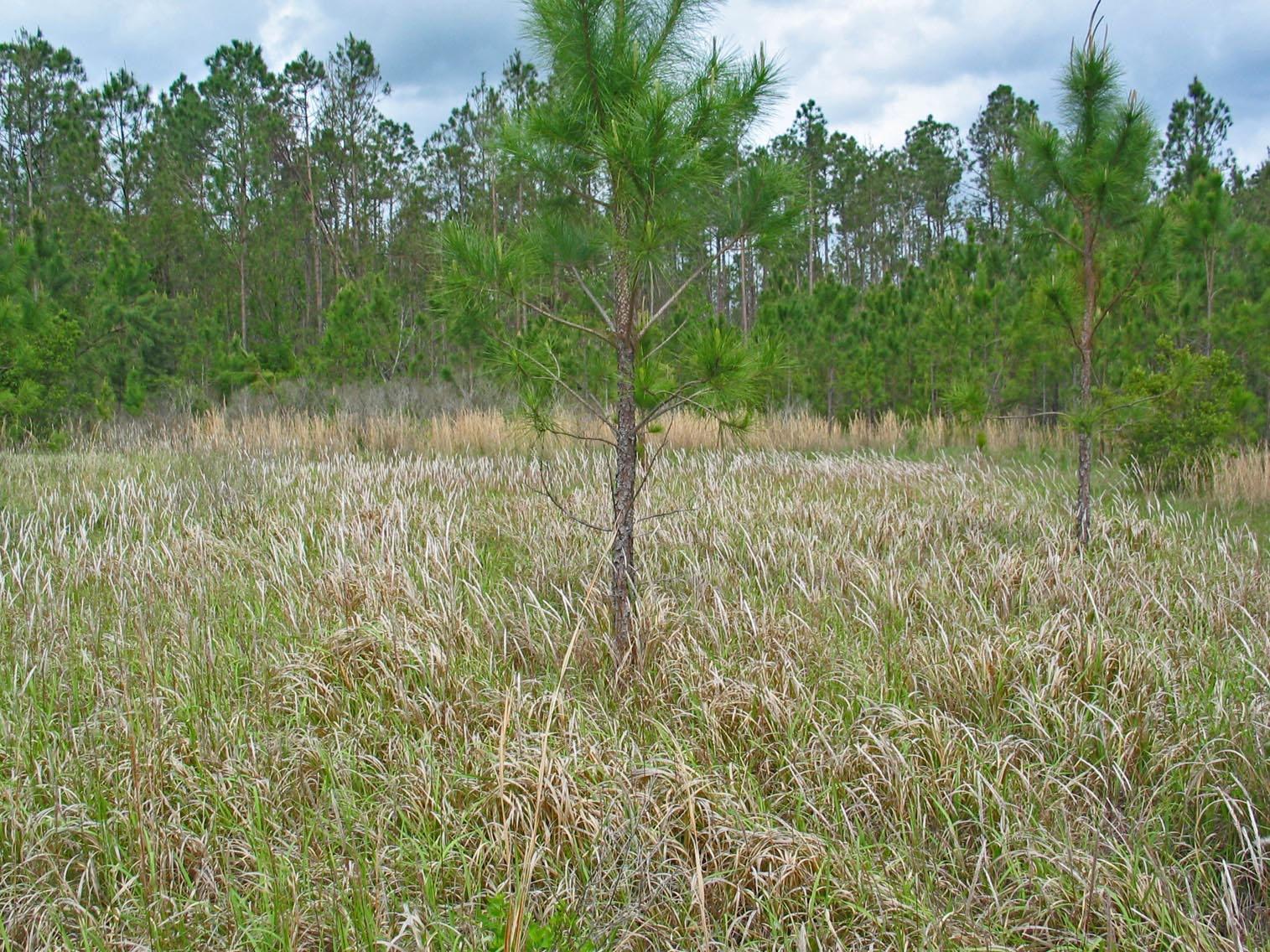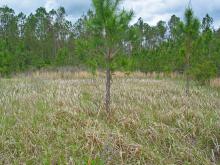Information Possibly Outdated
The information presented on this page was originally released on July 26, 2007. It may not be outdated, but please search our site for more current information. If you plan to quote or reference this information in a publication, please check with the Extension specialist or author before proceeding.
Cogongrass marches across Mississippi
By Andrea Cooper
MSU College of Forest Resources
MISSISSIPPI STATE -- Cogongrass has spread across the southern United States since arriving as packing material in crates shipped from Asia to Mobile, Ala., in 1912.
The invasive grass, which chokes out native plants and causes problems for livestock and wildlife, is the subject of two recent studies in Mississippi State University's College of Forest Resources.
“Cogongrass first appeared in Mississippi in the early 1920s. It has rapidly spread on equipment and in contaminated soil, by wind-dispersed seeds, by expanding colonies and even through intentional plantings as a possible forage plant and anti-erosion tool,” said doctoral student Lisa Yeager. “In fact, cogongrass is still sold by nurseries as an ornamental because of its ‘attractive' foliage and hardiness.”
Yeager has studied the invasiveness of cogongrass in different plant communities at Camp Shelby in Forrest County.
“Cogongrass is capable of spreading into almost any habitat. The speed of its spread may be affected by the amount of soil disturbance, tillage and burning in different areas,” she said. “By determining which areas are most susceptible to cogongrass invasion, managers can develop strategies for control.”
Yeager's study revealed that cogongrass invades the more open longleaf pine forests of south Mississippi rather than pine-hardwood areas. Fire, which is required for longleaf pine management, also increases the growth and encroachment of cogongrass.
“This is bad news for land managers trying to maintain the natural longleaf pine habitat crucial for the gopher tortoise and other endangered species,” Yeager said. “Managers should monitor for the occurrence of cogongrass in and near areas targeted for restoration of longleaf pine.”
The problems with cogongrass don't stop with its invasive nature. The grass grows in dense colonies that exclude essentially all other plants and even ground-nesting birds. The leaves die and form mats that increase fuel loads so that fires burn hotter and faster than normal.
“Hotter and faster fires are detrimental in plant communities like the longleaf pine, which require controlled burning as part of their management,” Yeager said.
Another problem with cogongrass is that it has essentially no wildlife value and destroys native plant communities.
“The leaves of cogongrass contain silica crystals that deter all but the most desperate animals from foraging. The crystals cut the mouth and wear down teeth,” she said. “Strong, sharp-tipped rhizomes or roots even penetrate the roots of native plants, decreasing their ability to compete.”
Yeager studied the ability of three native plants to slow or stop the spread of cogongrass at Camp Shelby. Wax myrtle, partridge pea and switchgrass were planted in plots of cogongrass after herbicide treatment.
“Wax myrtle seedlings didn't act as a barrier to vegetative encroachment, but they could be established to diversify the plant community and offer wildlife value,” Yeager said.
When used in conjunction with herbicide treatments, partridge pea and switchgrass both appeared to enhance cogongrass control.
“The effect might be improved if combined with multi-annual herbicide applications,” Yeager explained.
A similar study examined the effects of simulated logging disturbance on cogongrass spread and growth.
“Disturbances like the periodic logging associated with normal forestry practices increase the growth and spread of cogongrass,” said Dan Prevost, a master's student in the College of Forest Resources. “Once the cogongrass has invaded a stand, forest regeneration is difficult.”
Cogongrass essentially prevents regeneration by seed and greatly increases seedling mortality, Prevost explained.
Prevost's study was conducted at the John C. Stennis Space Center in Hancock County from 2004 to 2006. He set up treatment sites and mimicked the types of disturbance associated with normal logging practices. When compared with control sites that had no disturbance, Prevost found a significant increase in spread within the treatment sites in less than one year.
“One of the most important revelations of this study was the correlation between spread and underground rhizome biomass,” Prevost said. “The leaves of cogongrass may not be able to break through in an established stand, but the roots are spreading underneath the stand from the edge the whole time.”
Once disturbances like setting up logging decks or roads have occurred, those rhizomes shoot up tillers and the patch spreads. Salvage logging following Hurricane Katrina probably increased the spread of cogongrass in south Mississippi.
“For affected landowners, the need to extract storm-damaged timber to offset financial losses simply outweighed the risk of spreading cogongrass,” Prevost said.
Herbicides give some control, but they are not sufficient alone and should be combined with burning, deep disking, mowing and replanting other grasses.
“It's important to remember that the herbicide treatment will vary with management objectives, a landowner's budget and site characteristics,” Prevost said.
Cost-sharing programs are available to landowners, includingthe Environmental Quality Incentives Program offered by the Natural Resources Conservation Commission and the Forest Land Enhancement Program offered by the Mississippi Forestry Commission.
Small landowners also can seek help from the Mississippi Bureau of Plant Industry, which offers enough herbicide to treat up to 25 acres.
Your Extension Experts
Related News
Pages
Related Publications
Pages
- « first
- ‹ previous
- 1
- 2
- 3




